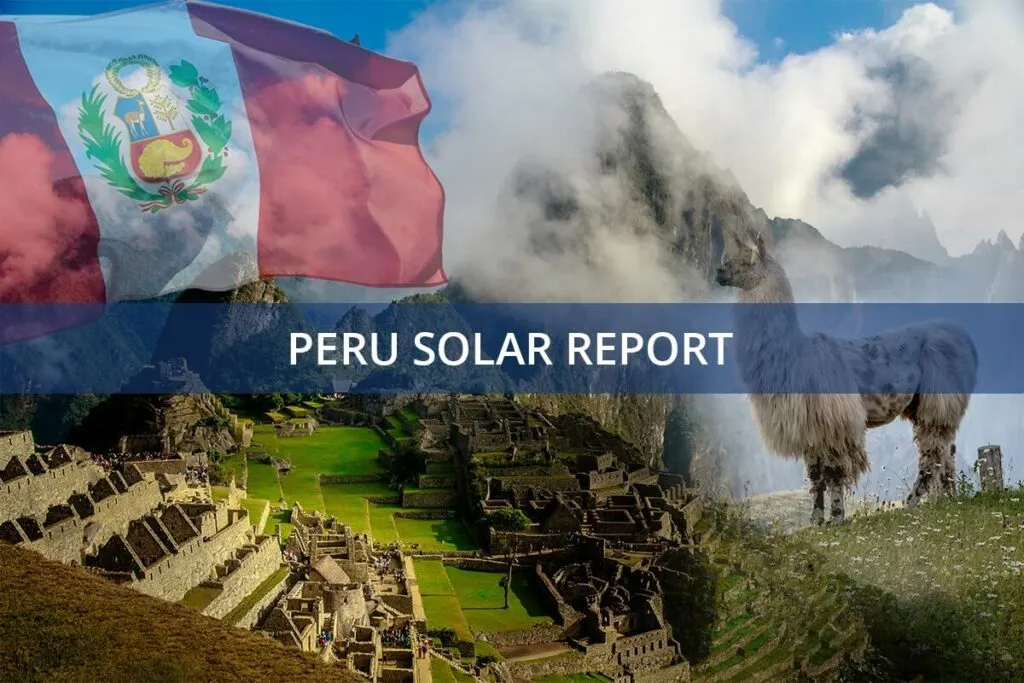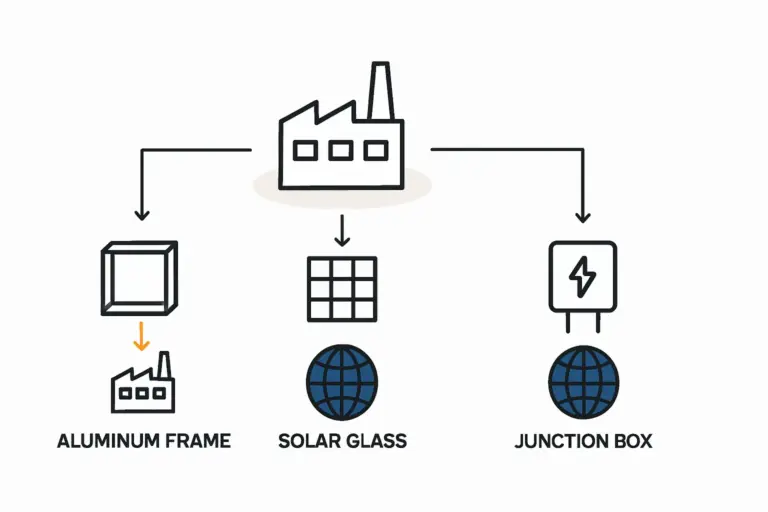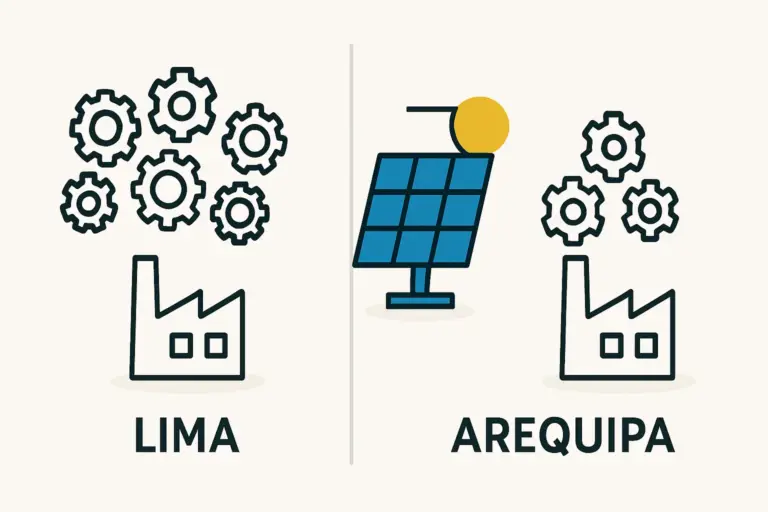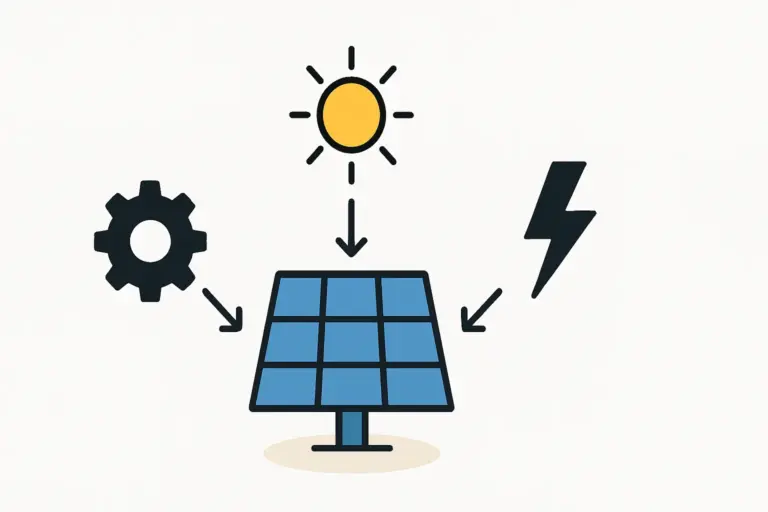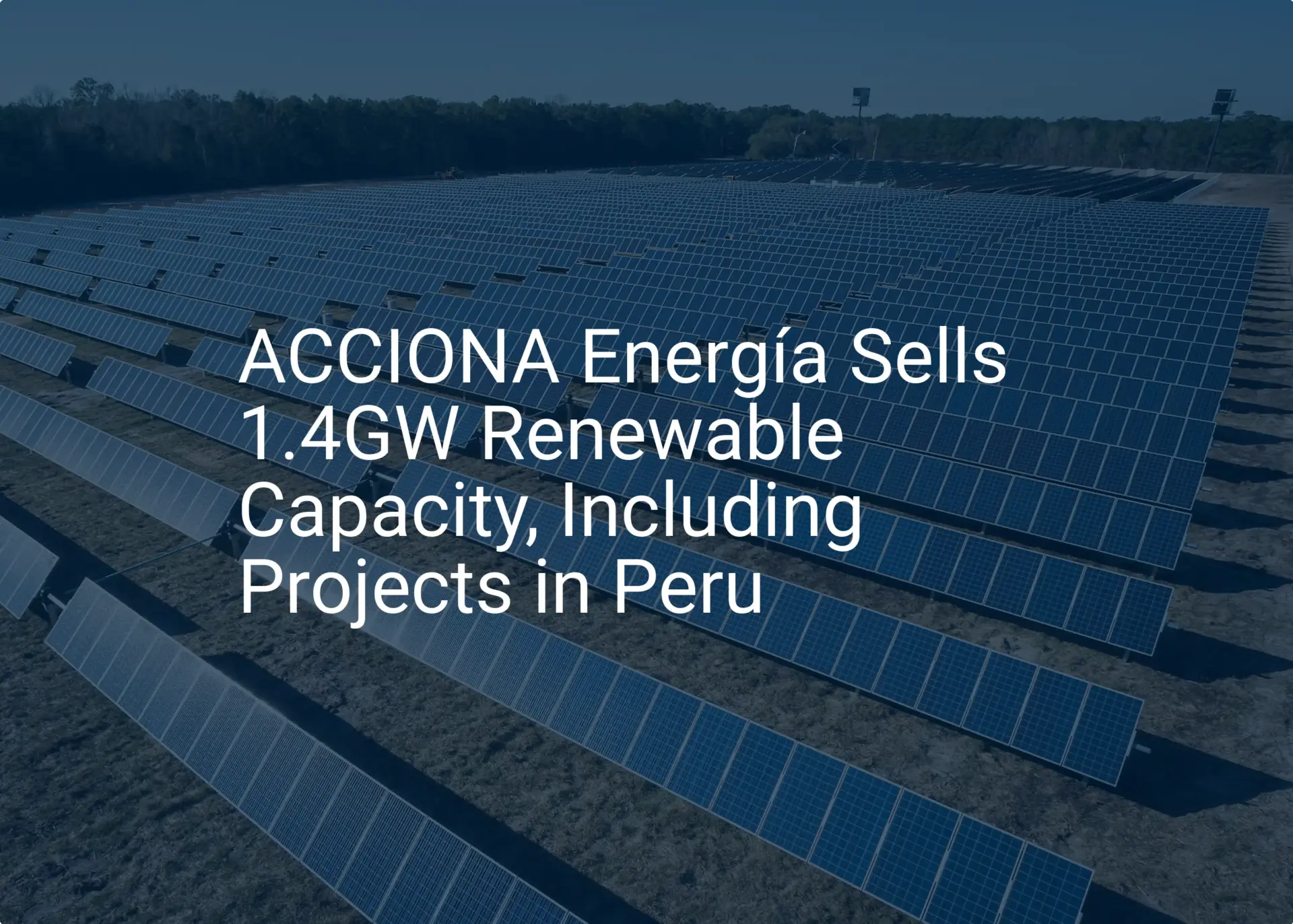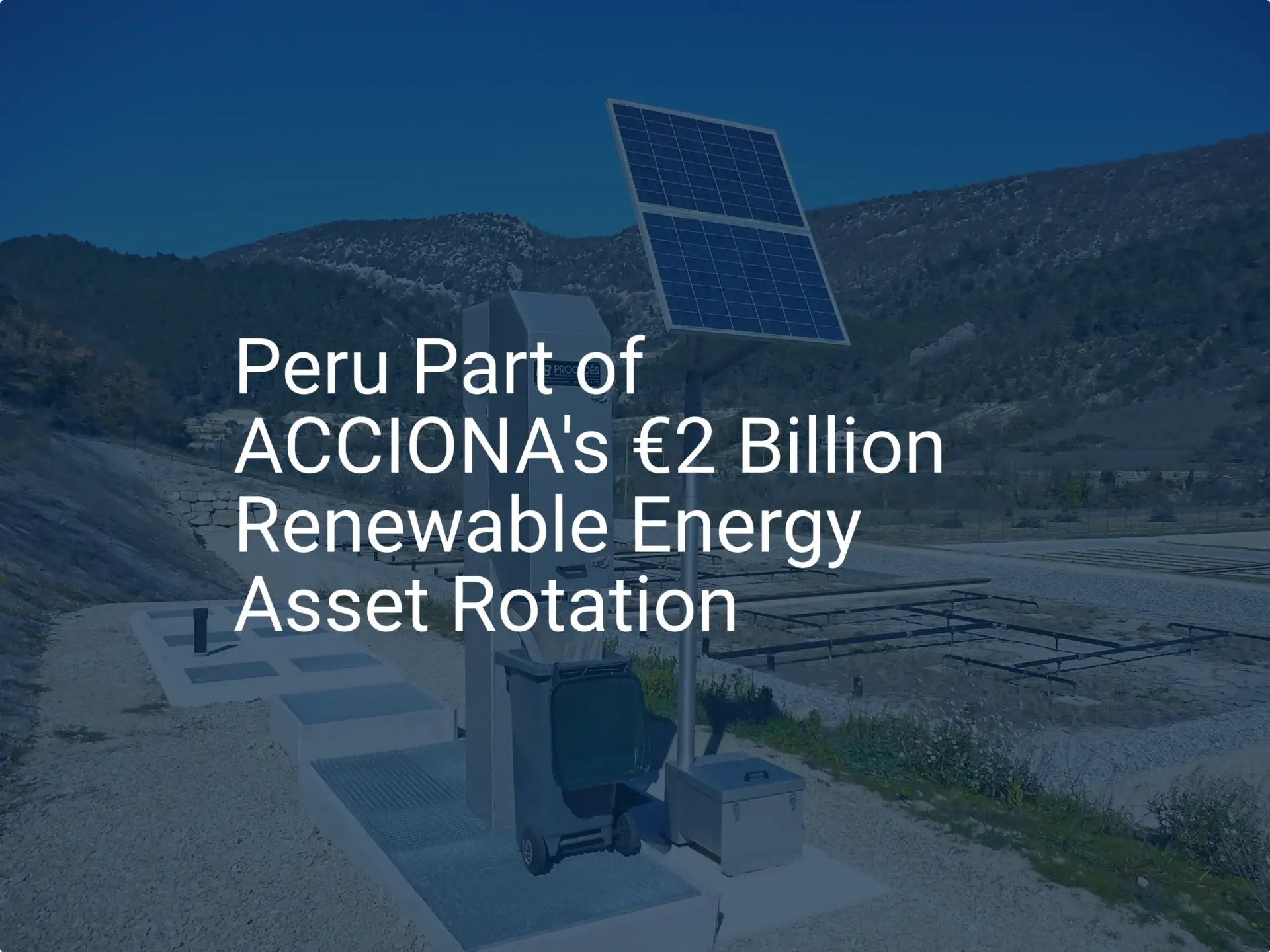An investor sees the potential. Peru’s high solar irradiation and growing demand for clean energy present a compelling opportunity for local solar module manufacturing.
Yet, transforming this vision into an operational factory requires navigating a landscape of administrative procedures and regulatory approvals. For many entrepreneurs, this red tape can seem like an insurmountable barrier, delaying projects or even preventing them from launching altogether.
While this bureaucracy may appear to be a complex maze, it is, in fact, a structured process. Understanding it transforms uncertainty into a predictable series of milestones. This guide provides a clear, business-focused roadmap for navigating the essential permits required to establish a solar module manufacturing facility in Peru, ensuring your project is built on a solid legal and regulatory foundation.
Understanding Peru’s Regulatory Framework for Manufacturing
Before diving into specific permits, it’s crucial to understand the main governmental bodies involved. A successful application hinges on engaging with the right authorities at the right time. In Peru, this regulatory framework is layered across national, sectoral, and local levels.
-
National Level (Environmental): The primary authority is the National Environmental Certification Service for Sustainable Investments (SENACE), which reviews and approves Environmental Impact Assessments (EIAs) for major investment projects. SENACE ensures compliance with national environmental standards, and its approval is often the first and most critical gate to pass.
-
Sectoral Level (Energy): The Ministry of Energy and Mines (MINEM) sets the policies and technical regulations for the energy sector. While SENACE handles the main environmental permit, MINEM may provide sectoral opinions or be involved in specific energy-related regulations.
-
Local Level (Municipal): The district or provincial municipality where the factory will be located issues key construction and operational permits. These include the Building Permit and the final Operating License, which confirm the facility adheres to local zoning, safety, and civil defense codes.

Based on industry experience with turnkey projects, successful project execution depends on a coordinated strategy that addresses the requirements of each of these bodies in the right order.
The Critical Path: Securing the Environmental Certification (Certificación Ambiental)
The most significant and time-consuming stage of the permitting process is obtaining the environmental certification from SENACE. This document confirms that the project’s potential environmental impacts have been properly assessed and that adequate mitigation measures are in place.
For a solar module factory, the project will likely be classified as requiring a Semi-Detailed Environmental Impact Assessment (EIA-sd). This is because manufacturing involves industrial processes and the use of chemicals, which fall into a moderate-impact category.
Step 1: Project Classification
The first formal step is submitting a Preliminary Environmental Evaluation (EVAP) to SENACE. This document provides an overview of the project, including its location, scale, and core processes. SENACE then reviews the EVAP to officially classify the project and confirm that an EIA-sd is the appropriate instrument. This classification provides certainty about the scope of the detailed studies to follow.
Step 2: Developing the Semi-Detailed Environmental Impact Assessment (EIA-sd)
Once classified, the core task is preparing the EIA-sd. This comprehensive technical study is not a solo endeavor; it must be developed and signed by a local environmental consultancy firm registered with the Peruvian government.
The EIA-sd typically includes:
-
Environmental Baseline: A detailed description of the existing environmental conditions (air, water, soil, biodiversity) at the proposed site.
-
Project Description: A thorough explanation of the manufacturing process, including the necessary solar panel manufacturing equipment, raw materials, and water and energy consumption.
-
Impact Identification and Mitigation: Analysis of potential impacts, such as chemical waste from soldering and cell washing, water discharge, and air emissions. This section must propose a concrete Environmental Management Plan to prevent or minimize these impacts.

Step 3: Public Participation and SENACE Review
Once the EIA-sd is submitted, it enters a public participation phase, which may involve hearings or workshops to inform the local community and gather feedback. Afterward, SENACE conducts its final technical and legal review. The approval process for an EIA-sd typically takes between 6 to 12 months—a critical timeline to factor into your overall business plan for a solar manufacturing plant.
Municipal Approvals: The License to Build and Operate
With the national environmental certification approved, the focus shifts to the local municipality for the permits needed for construction and day-to-day operations.

The Building Permit (Licencia de Edificación)
This permit authorizes the construction of the factory. Obtaining it requires submitting a technical file to the municipal government that includes:
- Architectural, structural, and electrical plans for the facility.
- Proof of property ownership or legal possession.
- The approved Certificación Ambiental from SENACE.
The municipality reviews these documents to ensure the proposed construction complies with the National Building Regulations and local zoning parameters. A proper factory layout and design that considers local codes from the outset is essential for a smooth approval.
The Operating License (Licencia de Funcionamiento)
This is the final permit required before production can begin. The license is issued after construction is complete and the facility has passed an inspection by the municipal civil defense authority (INDECI). This inspection verifies that the building has all necessary safety measures—such as fire suppression systems, emergency exits, and proper signage—to operate safely.
Common Challenges and Strategic Considerations
Navigating this process efficiently requires foresight and an awareness of potential hurdles.
Coordinating National and Local Authorities
While the process is sequential, the requirements of national and local bodies can feel disconnected. A common challenge for international investors is managing the flow of communication and documentation between SENACE and the local municipality. Engaging a local legal or administrative consultant familiar with both jurisdictions is often a wise investment.
Managing Technical Specifics
Regulators will pay close attention to the technical details of the solar manufacturing process. Plans for handling chemical inputs (e.g., flux, cleaning solvents) and managing industrial waste are scrutinized. A clear and well-documented plan for waste treatment and disposal is not just a regulatory requirement but a cornerstone of a sustainable and bankable project.
Factoring Timelines into Investment Planning
The combined timeline for environmental and municipal permits can realistically span 12 to 18 months. This is not a passive waiting period; it is an active phase that requires investment in studies and consultants. These timelines and associated costs must be accurately reflected in the project’s financial model to avoid underestimating the initial investment costs and capital requirements.
Frequently Asked Questions (FAQ)
Do I need a local partner in Peru to handle permits?
While not legally mandatory, it is highly recommended. A local consultancy or legal firm with experience in environmental and municipal permitting can navigate the administrative system far more efficiently, saving significant time and preventing costly errors.
How long does the entire permitting process take from start to finish?
A realistic estimate for a project requiring an EIA-sd is between 12 and 18 months. This includes the time for preparing the studies, the SENACE review period, and obtaining the municipal licenses.
What is the most common mistake foreign investors make in this process?
The most frequent misstep is underestimating the time and rigor of the Certificación Ambiental process. Assuming it is a simple formality can lead to significant project delays and budget overruns.
Does the specific location of the factory within Peru affect the permitting process?
Yes, significantly. The chosen site must comply with municipal zoning regulations (e.g., it must be in an area zoned for industrial use). Furthermore, if the site is near an environmentally sensitive area, such as a protected natural reserve or water source, the environmental assessment will be subject to greater scrutiny.
Conclusion: From Regulatory Maze to Strategic Roadmap
Establishing a solar module factory in Peru involves a structured, multi-stage permitting process that is entirely navigable with the right preparation. By understanding the distinct roles of SENACE and municipal authorities, and methodically progressing from national environmental certification to local operating licenses, an investor can confidently move a project from concept to reality.
The key is to view this regulatory journey not as a bureaucratic obstacle, but as an integral part of project development. Proper planning, professional support, and a clear understanding of these milestones create the strategic foundation for a successful and sustainable manufacturing investment in Peru’s growing solar industry.

